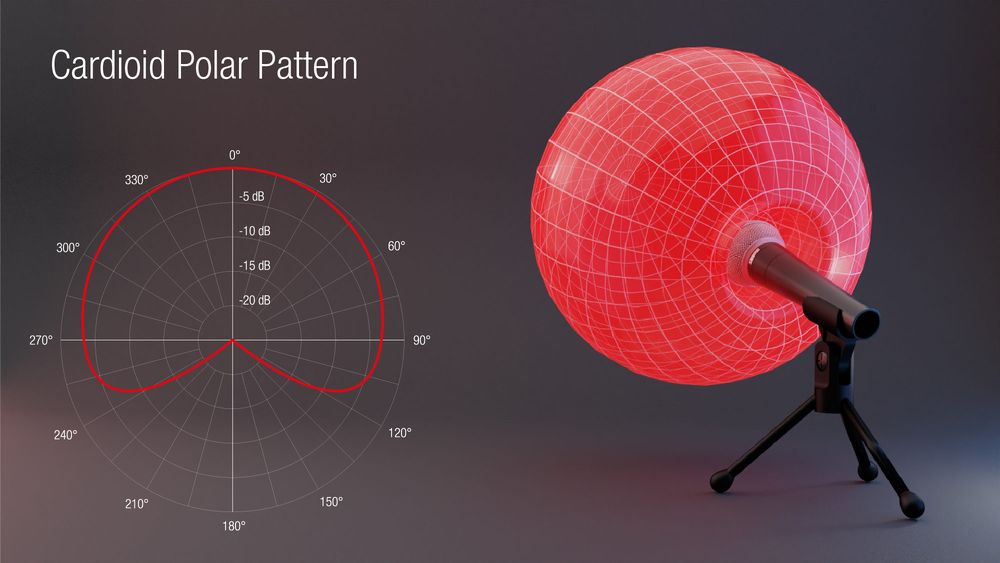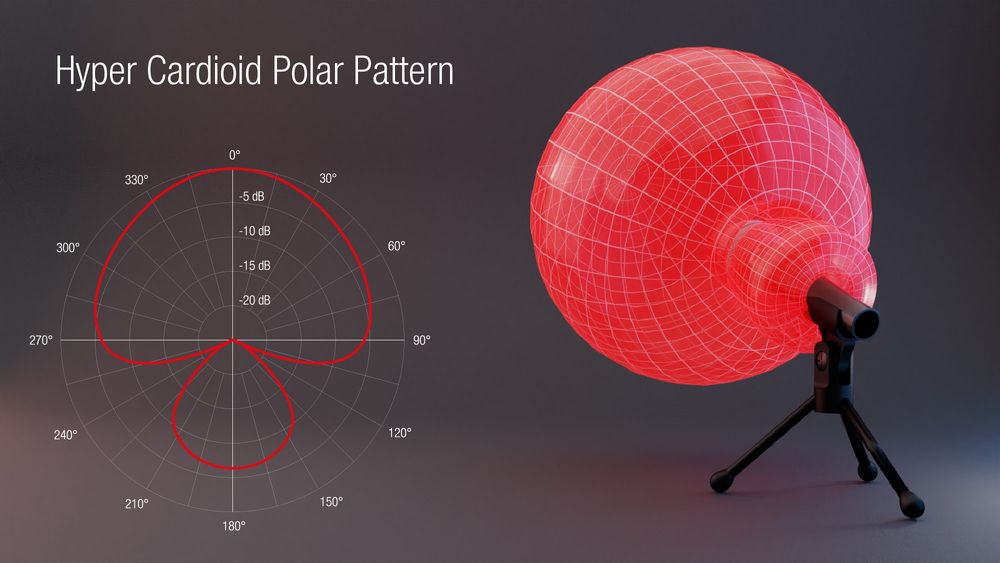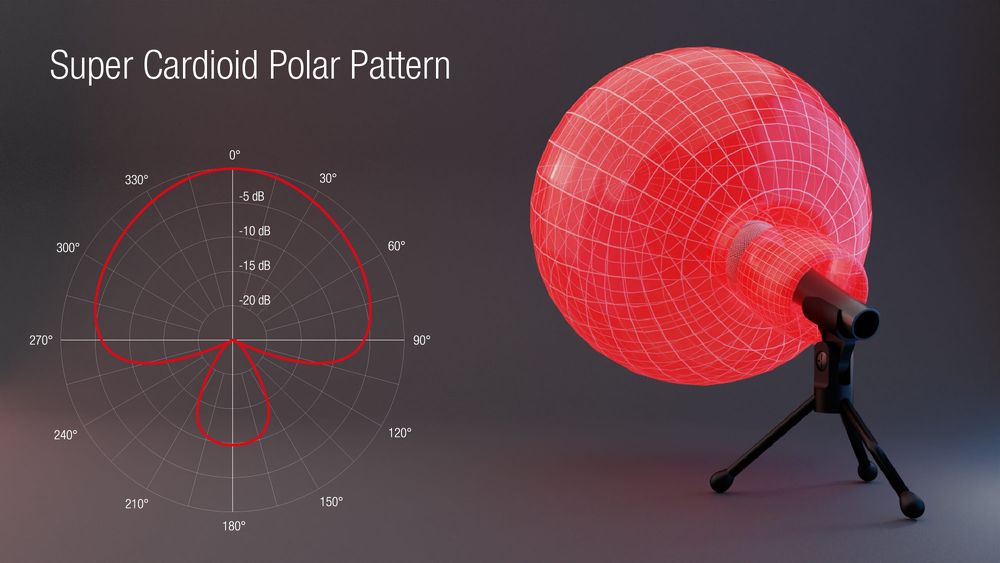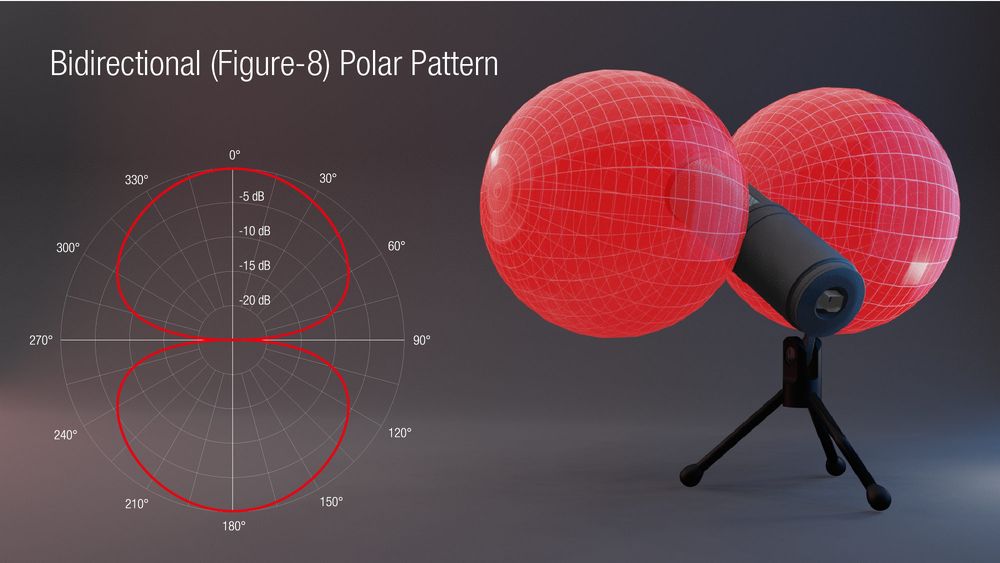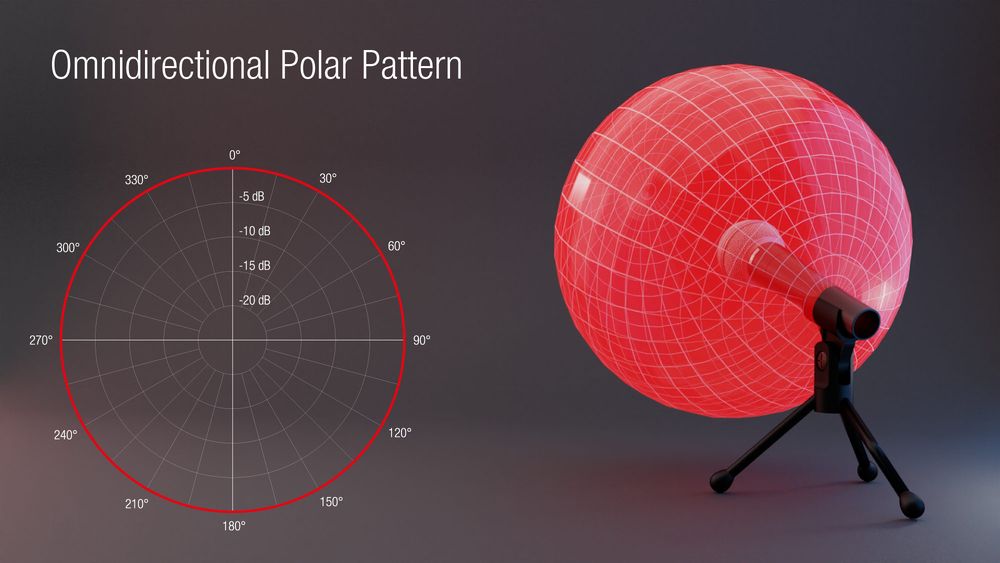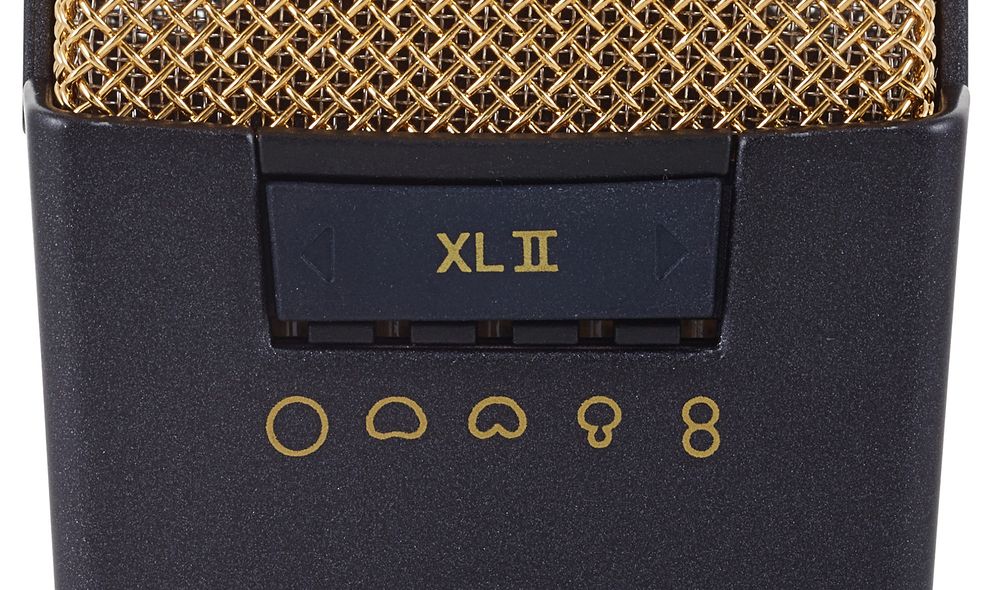6. Directional Patterns
Unidirectional pattern
The most common directional pattern is cardioid (unidirectional). Sources in front of the microphone (on axis) are picked up louder than sources placed to the sides of the microphone (off axis). Sources at the back of the microphone are suppressed quite effectively. Cardioid microphones are very versatile, you can use them on almost anything in any situation. Cardioid patterns are also required for many stereo miking techniques.
Directional patterns
Supercardioid and hypercardioid directional patterns, as you might guess, are more directional than the normal cardioid pattern. Both the super- and the hypercardioid pattern suppress sound from the sides more effectively than normal cardioids. However, sound reaching the back of the microphone is picked-up a little louder than with a normal cardioid pattern. Thats important to keep in mind for live situations: when you use hyper- or supercardioid microphones, place the stage monitors not directly behind the mic (as you would with a normal cardioid) but slightly to the sides. With hyper- and supercardioid microphones, rejection is greatest at about 110-130 degrees off the main recording axis. Hypercardiod and supercardioid patterns are often used on stage and in the studio for better separation between sources in close proximity, e.g. snare and hihat.
Bidirectional pattern
Figure 8 is a pattern that is equally sensitive to front and back. An alternate term for figure 8 is therefore bidirectional. Sources placed to the sides, however, are rejected very, very effectively. The figure 8 pattern is very rare for small diaphragm microphones. Thats because the bidirectional pattern requires the mic to be designed for side addressed use (like most large diaphragm condensers), so the back of the capsule is exposed. Typical small diaphragm pencil mics, however, are designed to be used end addressed, so the back of the capsule is covered by the microphone housing. Figure 8 microphones are less versatile than cardioids; they are mostly used for certain stereo miking techniques (M/S, Blumlein). Small diaphragm capsules for figure 8 pattern are only offered by some of the more expensive high class manufacturers.
Omnidirectional pattern
Omnidirectional microphones pick up sound from all sounds equally. Omnidirectional mics are rarely used on stage, because they easily produce horrible feedback. In the studio, engineers like to use omnidirectional mics on stringed instruments, among other things, because they produce a very natural sound with a lot of air. Omnidirectional microphones pick up a lot of ambience and therefore work best in great-sounding rooms. For stereo miking, omnidirectional microphones should not be used too close to each other, or there will be no stereo image to speak of. XY-stereo miking wont work, as omnis do not pick up directional information. But spaced omnis, as engineers call the most common stereo technique for omnidirectional microphones, produce a very wide and impressive sound image.
Modular Capsule Systems
Some small diaphragm microphones allow you to change the directional pattern by exchanging capsule heads. The more exclusive brands (such as Schoeps) offer a wide variety of capsules, head amplifiers and other accessories. Among entry level microphones, some manufacturers offer pre-configured sets of several capsules (cardioid, omni, sometimes hypercardioid) which can be screwed to the head amplifier (i.e. the microphone electronics). Switchable patterns, as are common among large diaphragm microphones, are extremely rare among small diaphragm microphones.

